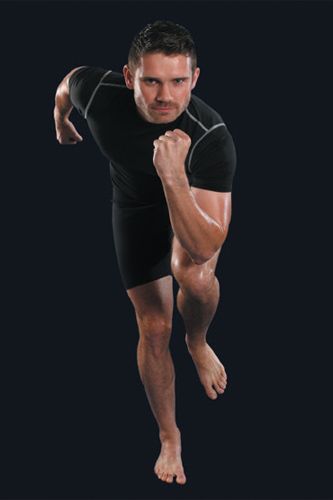
Whether you're an avid runner or not, it is likely that you have seen someone wearing Vibram toe shoes. One of if not the biggest debate within running communities is whether it is better to run with a classic running shoe or one with barefoot. Legitimate arguments exist for both sides of the debate.
Barefoot running advocates point out that humans ran and walked without shoes for millions of years, arguing that going barefoot is natural for humans and can reverse injuries caused by modern running techniques while preventing future problems. But those against barefoot running like to remind us that asphalt and concrete didn't always exist and that there were very few 50 or 60 year old running millions of years ago.
A study led by Harvard professor Daniel Lieberman suggest that runners who don't wear shoes have a significantly different foot strike that minimizes structural impact compared to those who wear shoes. Barefoot runners tend to point their toes when landing, putting the impact at the middle or front of the foot instead of on the heel making the runner less prone to repetitive stress injuries. This foot strike pattern was also shown to be more economical because runners use less energy to run the same distance as runners using traditional shoes and striking on the heel.
On the other hand a trial published in the journal Medicine &Science in Sports & Exercise raises question whether barefoot running actually develops a different set of running injuries. Runners were given pre and post MRI studies of their feet. The MRI images showed that over half of them had developed increased bone-marrow edema in the tarsals and metatarsal bones.
One helpful point to take from this is that not everyone who makes the switch to barefoot technology will end up with injuries. However anyone planning on doing so needs to be extremely cautious during the transition period. It is important to allow foot and calf muscles to adapt. Whether you plan on running with barefoot minimalist shoes or completely barefoot using a mid range cushioned shoe initially can be a good transition. When it comes to injury prevention and running efficiency, it's much more important how you run than what you run in. Heel strikers will sustain more impact injuries than those who allow their arches to act as natural shock absorbers. The most efficient and least injury-prone runners shorten their stride, land on the forefoot and keep the running motion smooth, light and flowing.
At Chiro-Health we have years of experience working with runners of all skill levels. Whether you have more question on barefoot running, or want a gait analysis to determine which type of running shoe is ideal for we are here to help. You can reach us by phone at (415) 546-1461 or shoot us an e-mail at frontdesk@chirohealthsf.com .
References: http://www.dynamicchiropractic.com/mpacms/dc/article.php?id=56486